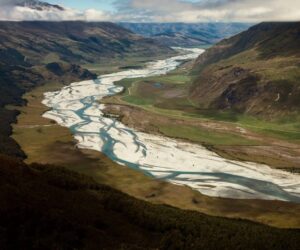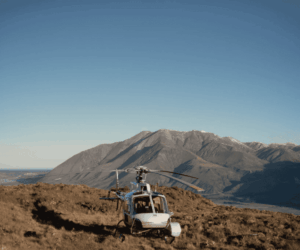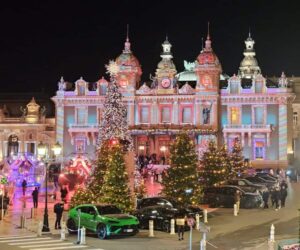How to Find the Thomas Dambo Trolls in Detroit Lakes
Andrew.Parks
Thu, 07/25/2024 – 10:34
Danish artist Thomas Dambo recently tapped more than 300 volunteers to help build the “biggest and most ambitious exhibition of [his] career” in Detroit Lakes. Here is everything you need to know about how to find all the trolls (and one wicked rabbit) hiding in Northwest Minnesota now….
What To Read Next
Discover the Different Sides of Nicollet Avenue in Minneapolis
Read More
Minneapolis Like a Local: An Insider’s Guide
Read More
Multicultural Food and Fun in the Global Twin Cities
Read More
Get help from the experts to plan your trip
Want to know the best spots in Minnesota? How about tips on how to make the most of your time in a specific city? Our Minnesota experts can answer your questions, offer advice, or plan the perfect Minnesota trip for you. For free.
Things to Do
Outdoor Adventures
Article
Caitlin Hannah

Thomas Dambo strikes a pose with Ronny Funny Face
WHAT ARE THE DETROIT LAKES TROLLS?
The Thomas Dambo Trolls made their Detroit Lakes debut in the summer of 2024. Dambo relies on recyclable wood and other reusable materials in all his work, including the incredibly popular giant trolls that have popped up in parks across 20 countries and five continents.
Dambo’s record-setting Detroit Lakes initiative was produced with the help of Project 412. The community-led non-profit has supported local art projects like a poetry walk and winter kite launch in the past. They sponsored the trolls and coordinated volunteers with a mission to bring people together and draw new visitors to the area and Visit Detroit Lakes.

Alexa’s Elixir troll in Detroit Lakes
/ Thomas Dambo
WHERE ARE THE DETROIT LAKES TROLLS?
Detroit Lakes has six trolls and three portals (extensions of Alexa’s arms) located throughout the Detroit Lakes area and beyond. (One portal is located just over the North Dakota border in downtown Fargo.) The exact locations of the trolls are revealed by following the clues from Alexa’s Elixir spell book or visiting the Detroit Lakes troll website.
We recommend setting more than a day aside to experience all the trolls, as they are spread out throughout the region and may require a short hike and drive to see.

Long Leif troll in Detroit Lakes
/ Thomas Dambo
The locations of the trolls are designed to be kept secret. Adventurers are encouraged to solve riddles and join the adventure to find them all. To learn more, visit the troll map.
Dambo encourages participants to share photos and videos on social media but keep the troll locations secret so others may have fun discovering them and following the clues. The trolls are expected to be on display as permanent installations for the next several years.
HOW DO I FIND THE DETROIT LAKES TROLLS?
Your journey begins in City Park — just beyond Detroit Lakes’ downtown area — at Alexa’s Elixir, a giant troll wielding a spoon, spell book and cauldron. Read her spell book to gain clues and uncover riddles for your adventure.
Pro tip: take pictures of the book pages or visit the online map courtesy of Visit Detroit Lakes here. Other trolls include Ronny Funny Face, Barefoot Frida, Jacob Everear, Long Lief, The Golden Rabbit, and three portals that are extensions of Alexa’s arms.

The Golden Rabbit
/ Thomas Dambo
As you find each troll, look at their necklace to reveal a number and symbol. The symbol will correspond to a letter in the troll alphabet in Alexa’s book. The number corresponds to the placement order of the letter in the word. Once you collect all the letters and put them in the right order, it will spell out a secret word. The secret word is an item on the map in Alexa’s book that will indicate the location of the Golden Rabbit. The location of the Golden Rabbit is secret, and the location is only revealed by solving the puzzle.
If you would like to avoid the game, you can visit the troll website, click on the troll, and select its location via a Google Map. This method works for the trolls, but not the ever elusive Golden Rabbit.

Barefoot Frida
/ Thomas Dambo
ARE THE DETROIT LAKES TROLLS ACCESSIBLE?
Yes, a number of the trolls in the Detroit Lakes area are accessible. Alexa’s Elixir is visible from the parking lot at City Park and is located on a grassy area near the park. Ronny Funny Face is located near a fully paved trail easily accessible less than a quarter mile from a parking lot.
Barefoot Frida and Long Leif are both on wooded trails that are traversable by all-terrain type walking devices but may be difficult if the ground is wet. Jacob Everear and the Golden Rabbit are the most difficult sculptures to navigate via the terrain or the clues to find the locations.
ARE THE DETROIT LAKES TROLLS A GOOD THING TO DO WITH KIDS?
Yes, the Detroit Lakes trolls are a family-friendly activity for all ages. The clues, riddles, and hiking opportunities are a great way to spend time outdoors, enjoy nature, and admire incredible art.

Jacob Everett
/ Thomas Dambo
CAN YOU SHARE ANY OTHER TIPS?
Sure! Nearly all of the trolls are located within remote parks or woodland areas. Proper footwear, sun protection, and bug spray are highly encouraged for all visitors.
To recap: The locations of the trolls are revealed by following clues and solving riddles. If you would like to avoid the game, you can learn more by visiting visit the online map courtesy Visit Detroit Lakes here.
While you’re in the area, be sure to visit Detroit Lakes and its charming downtown, and support their many local restaurants, shops, coffee shops, brewery, outdoor recreation areas, and more.

Mountain biking in Detroit Lakes
WHAT ELSE CAN I DO IN DETROIT LAKES?
Detroit Lakes boasts a bustling main street, hundreds of lakes, thrilling mountain biking, award-winning golf, and events that happen all year long. Find out more things to do while you’re in the area here.
There are plenty of places to stay in the area too, including hotels, resorts, and vacation rentals that make it easy to turn your troll hunt into a proper vacation.

One of Thomas Dambo’s trolls
/ Visit Detroit Lakes








